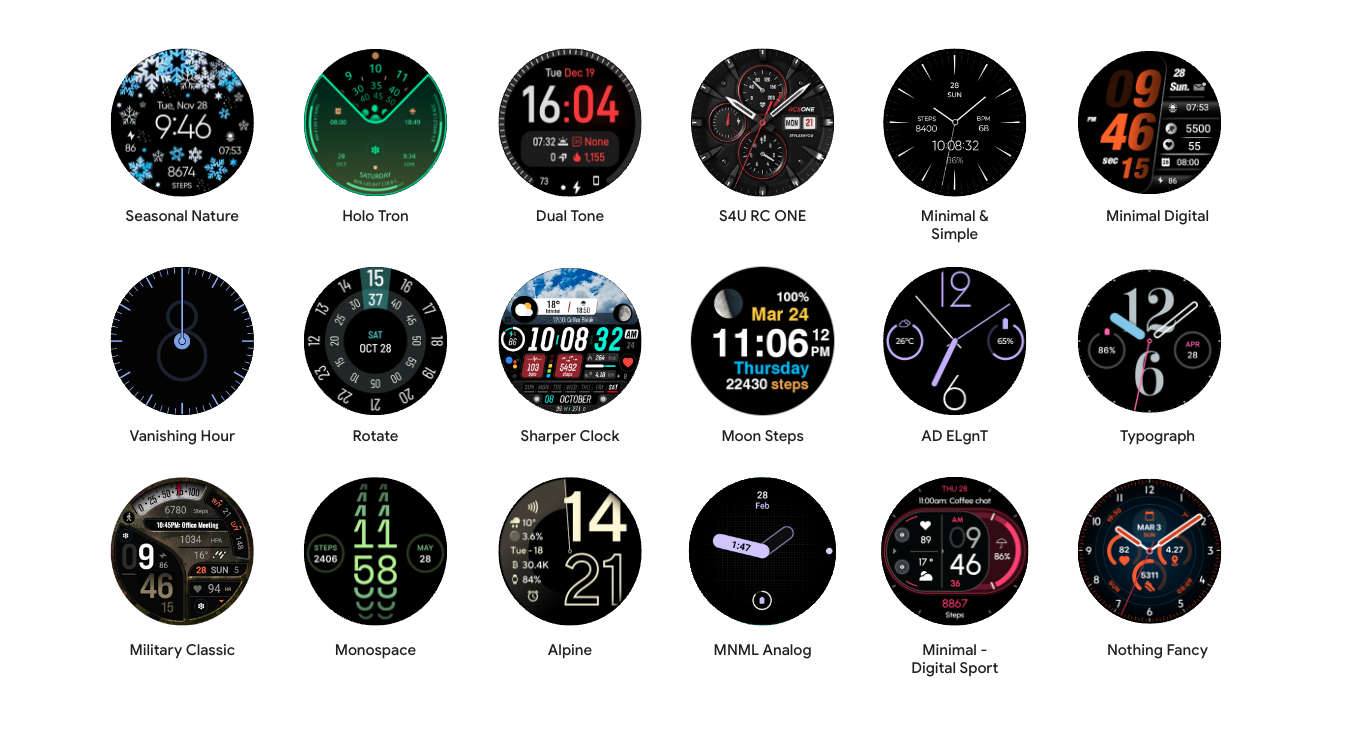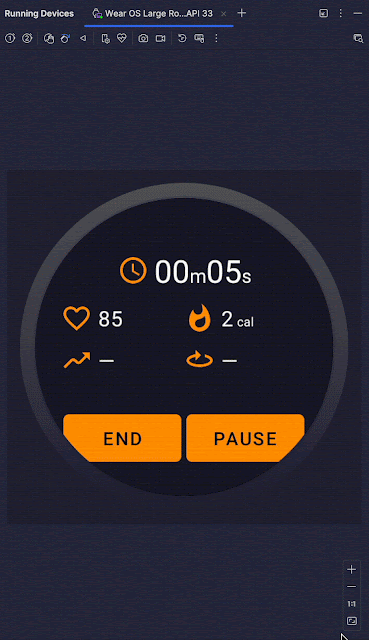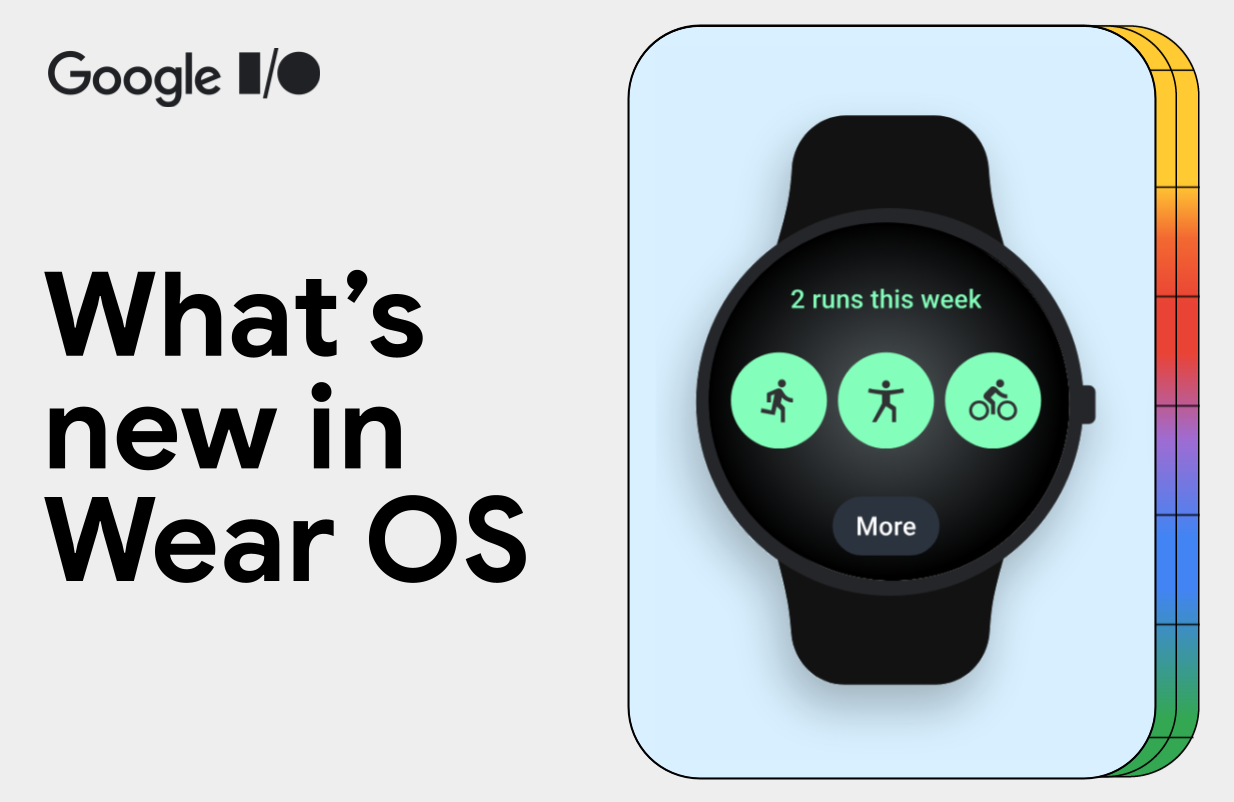Android Developers Blog: What’s new in Wear OS

Kseniia Shumelchyk, Android Developer Relations Engineer, and Garan Jenkin, Android Developer Relations Engineer
Wear OS has seen incredible growth and advancements over the past year. With watch launches from Pixel, Samsung and more, Wear OS grew its user base by 40% in 2023 and has users in over 160 countries and regions. And Wear OS has expanded to more brands including OnePlus, OPPO and Xiaomi. This growth has been accompanied by heavy investments in performance and power optimization.
In this blog post, we’ll be highlighting some of the key updates we announced at Google I/O this year, so let’s dive in and explore the latest advancements in Wear OS and how you can make the most of the platform.
Wear OS 5 Developer Preview
We’re excited to be releasing the Developer Preview of Wear OS 5, the next version of Google’s smartwatch platform arriving later this year, based on Android 14. Central to our release of Wear OS 5 is continuing to enhance battery life.
Wear OS 5 brings performance improvements over Wear OS 4. Tracking your workout is now more efficient; for example, running a marathon consumes up to 20% less power on Wear OS 5 than on Wear OS 4.

To help you develop power-efficient apps on Wear OS, we’ve released a new guide to conserve power and battery. Be sure to take a look!
Wear OS 5 is based on Android 14, which brings with it a number of developer-facing changes. Check out what’s changed and try the new Wear OS 5 emulator to test your app for compatibility with the new platform version.
Changes in Watch Faces development
Last year we introduced the Watch Face Format as part of Wear OS 4, and we’ve had a fantastic response, with 30% of watch faces in Google Play already using the format. It’s been great to see what you’ve all been able to create so far using the Watch Face Format!

We’re excited to bring you the next iteration of the Watch Face Format with Wear OS 5.
Additionally, we’re announcing some changes to existing watch face development using Jetpack Watch Face APIs. Starting from Wear OS 5, we are introducing restrictions to complications for watch faces built with AndroidX or the Wearable Support Library that will apply to some data sources, as well as Google Play publishing limitations to new watch faces built with these libraries.
Check out the Watch Faces blog post for full details on the new features in Watch Face Format and changes to watch faces development options.
Tooling and library updates
Jetpack Compose for Wear OS
Adoption of Compose on Wear OS has grown 200% in the past year, highlighting the ease with which Compose allows developers to build for the watch form factor. Recently we’ve seen top apps such as WhatsApp, Gmail and Google Calendar built entirely using Compose for Wear OS, and it’s the recommended way for building user interfaces for Wear OS apps.
With the 1.3 release of Jetpack Compose for Wear OS, we’ve graduated a number of visual improvements and fixes from beta to stable.
In the past year, we’ve added features such as SwipeToReveal, to give users additional means for completing actions, an expandable item, to enhance the use of the smaller screen and show additional information where needed, and a range of WearPreview supporting annotations, for ensuring your app works optimally across the range of device sizes and font scales.

And at Google I/O 2024, we announced a lot of new updates with Jetpack Compose that help you build across form factors, including Wear OS, read more in this blog and check out how SoundCloud supported more screens using 45% less code with Jetpack Compose.
Tiles and ProtoLayout
Wear OS tiles give users fast, predictable access to the information and actions they rely on most. Version 1.4 of the Jetpack Tiles library, currently in alpha, introduces preview support for Android Studio to help you quickly iterate on your Tile development while also helping you create optimal-looking tiles on a range of display sizes.
Previews can be seen starting in Android Studio Koala Feature Drop (Canary), with the following dependencies:
- androidx.wear.tiles:tiles-tooling-preview:1.4.0-alpha02+
- androidx.wear.tiles:tiles-tooling:1.4.0-alpha02+
- androidx.wear:wear-tooling-preview:1.0.0+
@Preview(device = WearDevices.SMALL_ROUND)
fun smallPreview(context: Context) = TilePreviewData(
onTileRequest = { request ->
TilePreviewHelper.singleTimelineEntryTileBuilder(
buildMyTileLayout()
).build()
}
)

We’ve also introduced better means for your app to determine whether your tiles are in use, through the getActiveTilesAsync() method.
Within ProtoLayout’s stable version 1.1, as used by Tiles, we’ve introduced a number of changes, such as the following:
And from 1.2.0-alpha02, we’ve made it easier for your layouts to adjust appropriately for different display sizes by adding the setResponsiveContentInsetEnabled() method to PrimaryLayout, as well as updating it for EdgeContentLayout. To use this setter, update your code as follows:
PrimaryLayout.Builder(deviceParameters)
.setResponsiveContentInsetEnabled(true)
.setContent(
// ...
)
.build()
Easier testing for fitness apps
Android Studio Koala Feature Drop (Canary) brings a new sensor panel to make it easier to test use of Health Services in your Wear OS app. The panel allows you to configure capabilities of the device, set values of specific data types and stimulate events such as auto-pause and resume of exercises.

Check out this blog to learn more about tooling updates.
Larger Displays
With the momentum surrounding Wear OS, we’re seeing a wider variety of round screen sizes and resolutions, which provides more choices for the user.
We are releasing new guidelines on how to build responsive UIs for different watch display sizes, as well as updates to existing libraries to introduce adaptive layouts, and components.
Check out the ComposeStarter sample for Wear OS on Github to see how to take advantage of these updates in your app. Furthermore, we’ve updated the sample to provide examples of using tools to evaluate your layouts, including :
- Previews – demonstrating use of WearPreviewDevices to visualize your layouts on a full range of device sizes and font scaling settings.
- Screenshot testing – helping you detect issues and regressions in your layouts on different sized devices, with different font scales and locales, representative of real-world devices.
Start building for Wear OS now
There has never been a better time to start building for Wear OS! Be sure to check out Building for the future of Wear OS technical session to learn more about all the latest updates for Wear OS!
To get started:
We’re looking forward to seeing the experiences that you build on Wear OS!
Source link






